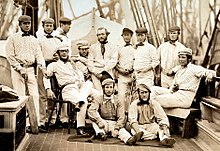
The English cricket team in North America in 1859 was the first ever overseas cricket tour by an English team. The touring team is sometimes referred to as George Parr's XI.

The English cricket team in North America in 1859 was the first ever overseas cricket tour by an English team. The touring team is sometimes referred to as George Parr's XI.
The idea for the tour came from William Pickering, a former player who had emigrated to Canada in 1852 and first captained Canada against the United States the following year. [1] Together with Robert Waller from St George's Cricket Club, Pickering opened discussions for a possible tour in 1856 but financial problems meant that it was three years before the money could be raised. The English team required a guarantee of £600, which Pickering obtained through the Montreal Cricket Club, Hamilton Cricket Club and St George's Cricket Club. [2]
The English team comprised six members of the All-England Eleven and six of the United All-England Eleven. [3] With George Parr as captain, the twelve players were effectively the cream of professional talent in the 1859 English cricket season that had just ended:
| Name | County club | Birth date | Batting style | Bowling style | Ref |
|---|---|---|---|---|---|
| G. Parr | Nottinghamshire | 22 May 1826 (aged 33) | right-handed | right arm underarm | [4] |
| R. P. Carpenter | Cambridgeshire | 18 November 1830 (aged 28) | right-handed | none | [5] |
| T. Hayward | Cambridgeshire | 21 March 1835 (aged 24) | right-handed | right arm roundarm medium pace | [6] |
| A. J. D. Diver | Cambridgeshire | 6 July 1824 (aged 35) | right-handed | right arm underarm fast-medium pace | [7] |
| J. Caesar | Surrey | 25 March 1830 (aged 29) | right-handed | right arm roundarm fast | [8] |
| Name | County club | Birth date | Batting style | Bowling style | Ref |
|---|---|---|---|---|---|
| W. Caffyn | Surrey | 2 February 1828 (aged 31) | right-handed | right arm roundarm medium pace | [9] |
| H. H. Stephenson | Surrey | 3 May 1833 (aged 26) | right-handed | right arm roundarm fast | [10] |
| J. Lillywhite | Sussex | 10 November 1826 (aged 32) | right-handed | right arm roundarm fast | [11] |
| Name | County club | Birth date | Batting style | Bowling style | Ref |
|---|---|---|---|---|---|
| T. Lockyer | Surrey | 1 November 1826 (aged 32) | right-handed | right arm roundarm fast-medium | [12] |
| Name | County club | Birth date | Batting style | Bowling style | Ref |
|---|---|---|---|---|---|
| J. Grundy | Nottinghamshire | 5 March 1824 (aged 35) | right-handed | right arm roundarm fast | [13] |
| J. Jackson | Nottinghamshire | 21 May 1833 (aged 26) | right-handed | right arm roundarm fast | [14] |
| J. Wisden | Sussex | 5 September 1826 (aged 33) | right-handed | right arm underarm slow | [15] |

Five matches were played, all against XXIIs, so none had first-class status. Three exhibition games were also played in which the 12 England players divided and added five North Americans to each team to make up eleven-a-side matches. Including travelling time, the trip lasted two months and each English player (all professionals) earned about £90, a sizeable sum at the time.
The team's opponents were:
One of the exhibition matches was played 14 October at Camac Woods.
Among their opponents were Harry Wright, a future pioneer of professional baseball, and Charles H. T. Collis, future Medal of Honor winner in the American Civil War.
In addition to the exhibition matches they also had two excursions to view the Niagara Falls.
The English side was exceedingly strong and would probably have beaten any twenty-two in England. There were excellent crowds for the first three matches but the weather in mid-October turned very cold and reduced the attendances at the last two. It was reported that the fielders wore gloves and overcoats in the last match. [16]
A product of the tour was a book by Fred Lillywhite, who travelled as scorer, entitled The English Cricketers' Trip to Canada and the United States and published in 1860. A reprint of the book was published in 1980 with an introduction by Robin Marlar, including biographies of all of the players.
For the general growth of cricket in the United States, it was most unfortunate that this pioneering tour occurred only 18 months before the American Civil War began. If the war had not broken out, it is highly likely that two or three follow-up tours might have been arranged in the early 1860s, thus building on the interest created by the initial trip. As it was, the enthusiasm for cricket faded in the war years and the troops on both sides adopted the embryonic game of baseball. When English teams resumed tours to America in 1868, not only did they have to try to rekindle the enthusiasm, but in baseball they had a serious rival to contend with.

Test matches in the period 1877 to 1883 were organised somewhat differently from international cricket matches today. All were between Australian and English sides, the teams were rarely representative, and the lengthy boat trip required was one that many cricketers were unable or unwilling to undertake. As such, the home teams enjoyed a great advantage.

The Canada national cricket team represents Canada in international cricket. The team is administered by Cricket Canada, which became an Associate Member of the International Cricket Council (ICC) in 1968.
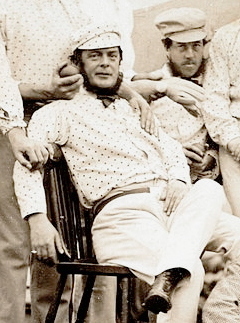
John Wisden was an English cricketer who played 187 first-class cricket matches for three English county cricket teams, Kent, Middlesex and Sussex. He is now best known for launching the eponymous Wisden Cricketers' Almanack in 1864, the year after he retired from first-class cricket.

John "Foghorn" Jackson was a Nottinghamshire and All-England Eleven cricketer who was generally reckoned to be the outstanding fast bowler of the 1850s.

Thomas Hayward was an English first-class cricketer who was generally reckoned to be one of the outstanding batsmen of the 1850s and 1860s. In the early 1860s, he and Robert Carpenter, his county colleague, were rated as the two finest batsmen in England. Richard Daft was among those ranking them as equal first, though George Parr reckoned Carpenter the better of the two.

Frederick Lillywhite was a sports outfitter and cricketing entrepreneur, who organised the first overseas cricket tour by an English team and published a number of reference works about cricket.

George Parr was an English cricketer whose first-class career lasted from 1844 to 1870. Known popularly as the "Lion of the North", Parr was a right-handed batsman and bowled occasional right-handed underarm deliveries. Throughout his career he played mainly for Nottinghamshire, and was club captain from 1856 to 1870. He also made occasional appearances for other counties and for Marylebone Cricket Club. He was a stalwart of the All-England Eleven and was captain of the first England touring team, which went to North America in 1859. He also captained England's second tour to Australia and New Zealand in 1864, returning home unbeaten. During this trip he travelled with the team from Liverpool to Melbourne on the SS Great Britain.

From May to September in 1878, an Australian cricket team made the inaugural first-class tour of England by a representative overseas side. In October, the Australians played additional matches in the US and Canada on their return journey. The tour followed one made by an England team to Australia in 1876–77, during which the first matches retrospectively given Test match status were played. None of the 1878 matches had international status, nevertheless the tour proved to be such an outstanding financial and sporting success that the future of international cricket was assured.

James "Jem" Grundy was an English cricketer during the game's roundarm era. He was one of the notable bowlers of the 1850s and was frequently among the leading wicket-takers. He bowled right-arm fast roundarm and is known to have occasionally used fast underarm deliveries, but he is said to have varied his pace. He batted right-handed and was an occasional wicket-keeper.
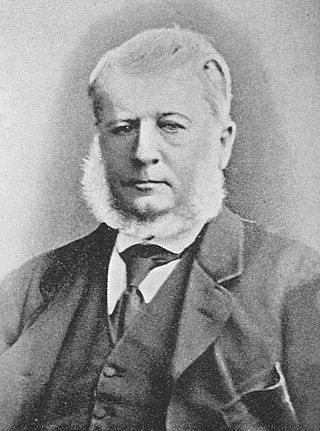
John Lillywhite was an English cricketer and umpire during the game's roundarm era.

Frederick William Lillywhite was an English first-class cricketer during the game's roundarm era. One of the main protagonists in the legalisation of roundarm, he was one of the most successful bowlers of his era. His status is borne out by his nickname: The Nonpareil.

Thomas Lockyer was a famous English cricketer during the game's roundarm era. He was one of the outstanding wicket-keepers of the 19th century.
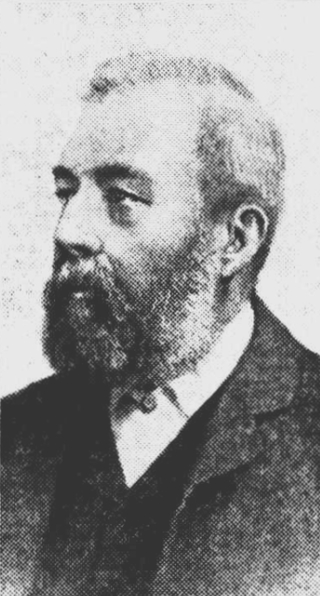
Heathfield Harman "HH" Stephenson was a famous English cricketer during the game's roundarm era.

The Australia national cricket team toured England in 1884. The team is officially termed the Fourth Australians, following three previous tours in the 1878, 1880 and 1882 seasons. The 1884 tour was a private venture by the thirteen players who each invested an agreed sum to provide funding, none of Australia's colonial cricket associations being involved. Billy Murdoch captained the team and George Alexander acted as player-manager. The Australians played a total of 32 matches in England, 31 of which have first-class status.
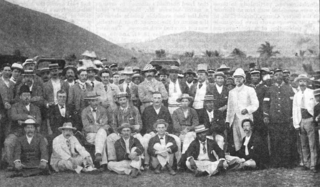
A team of amateur cricketers under the captaincy of Robert Slade Lucas toured the West Indies in the 1894-95 season, playing matches between January and April 1895. They played a total of 16 matches of which eight are regarded as first-class. It was the first visit of an English cricket team to the West Indies.
An England cricket team toured Australia and New Zealand in the 1863–64 season. This was the second tour of Australia by an English team, the first having been in 1861–62, and the first to visit New Zealand. Like the 1859 team in North America, this team is sometimes referred to as George Parr's XI.
George Bennett, sometimes known as Farmer Bennett, was an English professional cricketer, who played first-class cricket from 1853 to 1873. He was mainly associated with Kent County Cricket Club, and made more than 150 appearances in first-class matches.
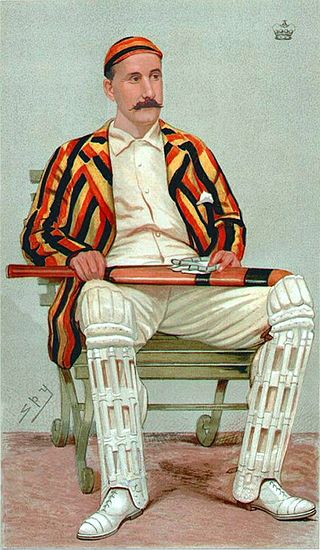
In the English winter of 1891–92, Lord Hawke led a touring party of English amateur cricketers on a tour of North America. During their tour they played eight matches, six in the United States of America and two in Canada. The tour contained two first-class fixtures, both contested against the Gentlemen of Philadelphia.
William Percival Pickering was an English first-class cricketer with amateur status. He was one of the founders of Surrey County Cricket Club in 1845 and later, having emigrated to Canada, played a significant role in the beginnings of international cricket especially through his proposal to fund an English tour of North America. Pickering is recorded in 29 matches from 1840 to 1848 which are designated first-class by CricketArchive, totalling 445 runs at the low average of 9.67 with a highest score of 51 not out, holding 17 catches and taking 7 wickets.
In English cricket, the years 1846–1863 were the main period of the sport's "roundarm era". Although roundarm had been legalised amid great controversy, its timespan was relatively short. By 1863, there was an increasing demand for the legalisation of overarm bowling and this was achieved on 10 June 1864.